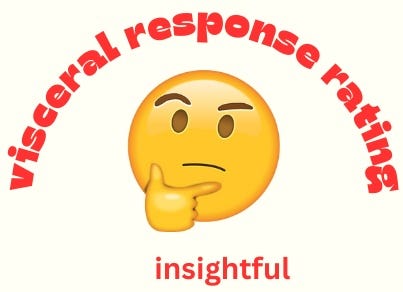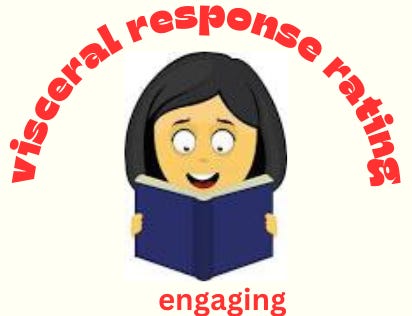Fasting, ‘reset button for the soul’
The season of fasting is over – for another year, but these two books on restraint and indulgence remain worth knowing about, at any time. Here’s some crucial context on fasting, a practice found in almost every spiritual tradition and sometimes called a reset button for the soul, from the March27 edition of This Week, Those Books. Read it here or sign up at https://thisweekthosebooks and get the post the day it drops

The Backstory:
- During the 40 days of Lent, Christians replicate Jesus Christ’s sacrifice and withdrawal into the desert to pray and fast.
- Ramadan’s 30 days of fasting, increased prayer, reflection and community mark Muslims’ belief that it is the most sacred month, when God revealed the first verses of the Quran to Prophet Mohammed.
- Fasting, a practice found in almost every spiritual tradition, is sometimes called a reset button for the soul. It has now entered popular culture, mostly as a weight loss tactic and a way to extend one’s lifespan.
This Week, Those Books:
- An engaging account of the history, science, spiritual tradition and practice of fasting.
- A novel that explores the notion of plenty and want in India and America.

- The Oldest Cure in the World: Adventures in the Art and Science of FastingBy: Steve HendricksPublisher: Abrams Press
Year: 2022

American writer Steve Hendricks manages to encompass pretty much the whole universe of fasting – from ancient cure to 19th century experimentation to current fad – in just under 450 pages. It is quite a feat.
Hendricks starts by offering modern-day examples of the way fasting can sometimes cure diseased bodies. He moves on to the poster boy of therapeutic fasting, 19th century Minneapolis doctor Henry S. Tanner. He recounts his own “dabbling in fasting”. And he delves into fasting’s long pedigree from the Vedic religion in India around 1500 BC, to philosophers in ancient Greece (“Pythagoras, Hippocrates, Plato and Plutarch to name just a few”) and Christianity’s fasting saints.
Especially interesting is the early chapter on how Tanner, an English immigrant to America and hailed in the press as “The Stomachless Man”, sparked worldwide interest in therapeutic fasting. His extraordinary experiments in surviving without food for 41 days “bested Christ”, Hendricks writes. It also triggered attention of the sort we would describe today as going viral. Tanner’s “Terrible Task of Endurance”, as the newspapers called it, was covered around the world, including in The Times of India and the West African Reporter. His miraculous survival was disdained by some, with Hendricks describing the “self-satisfied chord of indignant superiority” adopted by an editorial from then British-colonised India: “An excitement to Americans is something like what the horse is to the Arab, or the dog to the Esquimaux: they can scarcely do without it.” Even so, writes Hendricks, “a seed had been planted…Henry Tanner had just sired modern therapeutic fasting”. He adds: “Across three millennia, small hints that fasting might be curative had emerged with some regularity and just as regularly faded away. But the idea never stayed dead” and abstinence from food continues to be associated with bodily and/or spiritual well-being.

- Fasting, FeastingBy: Anita DesaiPublisher: Chatto & Windus
Year: 1999

This novel is about surfeit and deprivation in India and America, with both cultures, in their own way, solidifying around male dominance, female subjugation and parental neglect. The basic storyline is simple. In small-town India, ageing epileptic spinster Uma lives with her parents and is treated like a drudge. Her younger, prettier sister Aruna has married well and gone off to Bombay while the baby of the family – Arun, the only son – is studying in America.
Rituals around food and drink speak volumes. Before he retired, Uma’s father must always have his lemonade when he returns from a post-work game of tennis, and it is his daughter who must tell the cook. Papa’s orange must be peeled by the women and presented to him. Uma is denounced by her mother as a “hussy” for daring to enjoy a single restaurant dinner – with wine and live music – for the first time in her life at the invitation of Ramu, black sheep of the family. When Anamika, Uma’s beautiful, bright and unhappily married cousin, dies in a suspected homicide at the hands of her husband and in-laws, Uma and her mother share a rare moment of love and it is expressed in food: Uma says she has asked cook to make a special breakfast. Mira-Masi, a widowed aunt on a spiritual quest, is one of the few women in the novel to enjoy some independence, which extends to cooking her food separately when visiting Uma’s family.
As for Arun, he is a vegetarian in meat-loving America. Though a “land of plenty”, America’s culture betrays an inner paucity. In the home of the Pattons, an all-American family with whom Arun lives for a time, the young man finds some strange customs revolving around food. The authoritative father barbecues meat that no one eats. The mother shops for groceries that she doesn’t cook. The daughter starves herself to thinness. The gym freak son forages at will. Though this novel is set in the 1970s, it underlines a key point – want and plenty can be deceptive.





